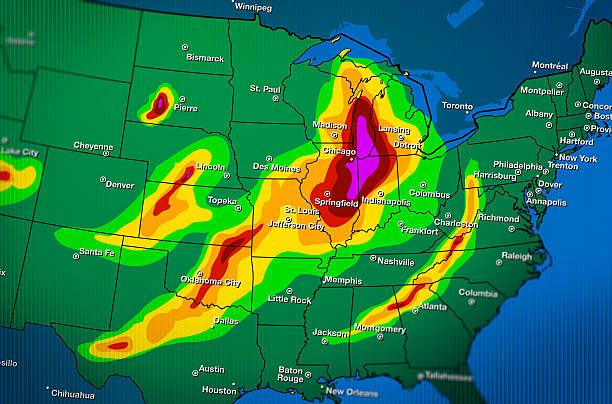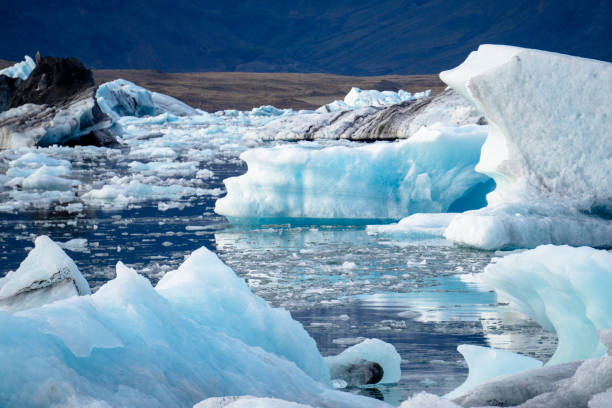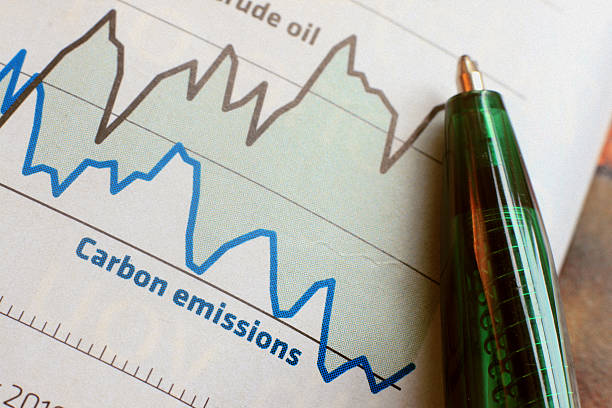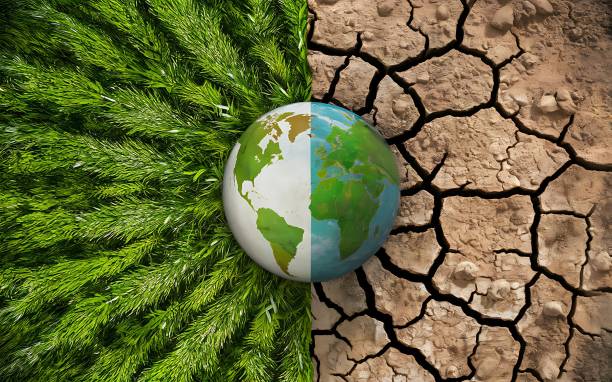Climate change is one of the defining challenges of the 21st century, presenting an existential threat with far-reaching and multi-faceted implications for ecosystems, economies, and societies worldwide. Understanding both the historical context of climate change, including the industrial revolution and its consequent environmental impacts, and the current scientific consensus on climate dynamics is essential for crafting informed policies and solutions that address the urgent challenge. It is no longer a distant threat but a present reality that warrants immediate and meaningful action. As we delve into the facts surrounding this global phenomenon, it’s crucial to remember that science is based on evidence; not opinion, not motive. Climate science is grounded in well-established methods, thorough research that undergoes peer review, and observable data, all of which highlight the necessity of addressing the situation promptly.
Climate change refers to the long-term warming of the planet, primarily driven by mankind’s actions that release greenhouse gases, such as carbon dioxide and methane, into the atmosphere. The scientific community has been studying climate change for several decades, and the evidence has become increasingly overwhelming. The increasing frequency of extreme weather events, rising global temperatures, and unprecedented environmental changes have sparked extensive research and debate within the scientific community regarding climate change.
Surveys and Studies
Over the past two decades, several key surveys have been instrumental in gauging the consensus among climate scientists on climate change. Notable studies include:
- Oreskes (2004): In her seminal analysis, Naomi Oreskes reviewed 928 peer-reviewed articles published between 1993 and 2003. She found that 75% of these studies endorsed the consensus view of human-induced climate change.
- Cook et al. (2013): This study analyzed over 12,000 climate-related papers and determined that 97% of the climate scientists whose papers expressed a position on the causes of global warming agreed that it is primarily caused by human activities.
- Peer-reviewed Survey (2016): A survey conducted by John Cook and others collected responses from 1,800 members of the American Meteorological Society (AMS), finding that 90% of respondents accepted that climate change is happening and that human activity is the primary driver.
- Global Climate Change Consensus (2016): This meta-analysis by peer-reviewed literature across multiple disciplines concluded that nearly 99% of climate scientists actively publishing in the field agree on anthropogenic (man-made) climate change.
Implications of the Consensus
The strong consensus among climate scientists has significant implications for public policy and individual behavior regarding climate change:
- Informed Policy-Making: Governments and policymakers can better formulate climate strategies, international agreements, and resource distribution based on the scientific consensus.
- Public Awareness: Understanding the scientific consensus helps in educating the public and addressing misinformation regarding climate change.
- Funding for Research: Increased consensus can drive funding towards climate science and research initiatives aimed at mitigation and adaptation strategies.
Challenges in Communication
Despite the strong scientific consensus, there remain significant challenges in communicating the realities of climate change to the public. Misinformation campaigns and political agendas have led to varying beliefs in the public, often conflicting with scientific evidence.
The Importance of Trust in Science
The public’s trust in scientific institutions plays a crucial role in addressing climate change. Studies reveal that individuals who have faith in climate experts are more likely to support policies aimed at addressing climate change.

Record-Breaking Temperatures
The year 2024 has set a new and alarming record. NASA has officially declared it the hottest year in recorded history, surpassing the previous record set just a year earlier in 2023.
This unprecedented heat is not an isolated incident but part of a concerning trend:
- 2024 was approximately 2.1 degrees Fahrenheit (1.2 degrees Celsius) warmer than the average temperature during the mid-19th century.
- The Earth experienced an extraordinary 15 consecutive months of record-breaking temperatures from June 2023 to August 2024.
Climate change has diverse and specific regional impacts across the globe. Here are some examples:

Regional Impacts of Climate Change
- Arctic and Polar Regions
- Sea Ice Decline: The Arctic Ocean’s sea ice is rapidly shrinking, with some models predicting a complete summer ice loss by mid-century.
- Glacier and Ice Sheet Melting: Ice sheets in Antarctica and Greenland are melting, significantly contributing to rising global sea levels.
- Coastal Regions
- Sea Level Rise: Rising sea levels are causing coastal erosion, increased flooding, and saltwater intrusion into freshwater sources, endangering communities and ecosystems.
- Ocean Acidification: Higher CO₂ levels are making oceans more acidic, threatening marine life, especially coral reefs and shellfish.
- Agricultural Regions
- Changing Rainfall Patterns: Unpredictable precipitation is impacting agriculture, with some areas experiencing droughts and others facing severe flooding.
- Temperature Extremes: Intense heatwaves and cold spells are reducing crop yields and affecting livestock health, straining food production.
- Urban Areas
- Heatwaves & Urban Heat Islands: Cities face more frequent and intense heatwaves, worsened by the urban heat island effect, increasing health risks and mortality rates.
- Flooding: Heavy rainfall and stronger storms are causing severe urban flooding, disrupting infrastructure and essential services.

Additional Impacts of Climate Change
- Wildfires & Biodiversity Loss
- Wildfires: Climate change is increasing the frequency and intensity of wildfires, particularly in regions like California and Australia, destroying ecosystems, degrading air quality, and posing health risks.
- Biodiversity Loss: Changing temperatures and precipitation patterns are disrupting habitats, causing shifts in species distribution and increasing extinction risks.
- Marine Ecosystems
- Fish Stock Shifts: Warming oceans are pushing fish populations toward cooler waters, impacting fisheries and the livelihoods of dependent communities.
- Coral Bleaching: Rising ocean temperatures are triggering frequent coral bleaching events, damaging coral reefs and the marine life they support.
These regional impacts highlight the urgency of developing tailored adaptation and mitigation strategies.
Scientific Consensus on Climate Change
The overwhelming scientific consensus confirms that climate change is real, occurring now, and primarily driven by human activities.
The Intergovernmental Panel on Climate Change (IPCC)—established in 1988—has become the global authority on climate change research, publishing comprehensive reports that serve as the foundation for climate policy.
Key Scientific Evidence
- Temperature Records: Global data shows a steady rise in temperatures over the past century, with recent decades being the warmest on record.
- Shrinking Ice Sheets: Arctic and Antarctic ice sheets are melting at an accelerating rate.
- Sea-Level Rise: Global sea levels have been rising faster in recent decades than at any other recorded period.
- Extreme Weather Events: The frequency and intensity of heatwaves, droughts, and heavy rainfall have increased significantly.
This extensive body of evidence underscores the need for immediate action to address climate change and its far-reaching consequences.

Causes of Climate Change
Climate change is primarily driven by human activities that release greenhouse gases—such as carbon dioxide (CO₂), methane (CH₄), and nitrous oxide (N₂O)—into the atmosphere. The burning of fossil fuels (coal, oil, and gas) is the leading contributor to CO₂ emissions.
Other key factors include:
- Deforestation: Large-scale forest clearance for agriculture, urbanization, and other uses reduces the Earth’s ability to absorb CO₂.
- Land Use Changes: Converting natural landscapes into agricultural or urban areas increases greenhouse gas emissions and disrupts ecosystems.
- Agriculture: Livestock farming, particularly beef production, releases methane and nitrous oxide, significantly contributing to global warming.
Consequences of Climate Change
The effects of climate change are extensive and impact both the environment and human societies. Major consequences include:
- Rising Sea Levels: Coastal communities face increased flooding, erosion, and habitat loss.
- Water Scarcity: Changing rainfall patterns and higher evaporation rates are leading to water shortages in many regions.
- Food Insecurity: Extreme weather, shifting temperatures, and changing precipitation patterns disrupt food production, leading to crop failures and price increases.
- Human Health Impacts: Vulnerable populations, such as the elderly and those with pre-existing conditions, are at greater risk due to heatwaves, vector-borne diseases, and air pollution.
Policy Recommendations
To combat climate change, governments, businesses, and individuals must take proactive steps:
- Transition to Renewable Energy: Shift from fossil fuels to solar, wind, and other clean energy sources.
- Increase Energy Efficiency: Improve efficiency in buildings, transportation, and industrial processes.
- Implement Carbon Pricing: Introduce taxes or cap-and-trade systems to create financial incentives for reducing emissions.
- Protect and Restore Natural Habitats: Forests, wetlands, and other ecosystems help capture CO₂ and mitigate climate change.
- Support Climate Resilience & Adaptation: Provide financial and technical aid to communities most affected by climate change.
Call to Action
Climate change is one of the most urgent global challenges, with undeniable scientific evidence pointing to human-driven causes. The time for action is now—by reducing emissions, transitioning to sustainable practices, and supporting climate resilience, we can mitigate its devastating impacts and create a sustainable future.

